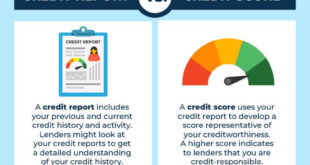Low-Rate Credit Report: Guide to Affordable Credit Monitoring. A low-rate credit report is essential for anyone who wants to monitor their financial health without breaking the bank. Accessing your credit report regularly ensures you stay on top of your credit score and catch any inaccuracies early. This article dives deep into the benefits, processes, and tips for finding affordable credit report services, helping you make informed decisions for your financial future.
What is a Low-Rate Credit Report?
A low-rate credit report offers individuals an affordable way to access their credit history and score. Unlike premium services, these reports focus on delivering the essentials: credit history, open accounts, balances, and inquiries.
Key Features of Low-Rate Credit Reports:
- Affordable pricing structures.
- Access to core credit data.
- Options for periodic updates.
Why is Regular Credit Monitoring Important?
Maintaining financial health involves more than just budgeting—it requires understanding your creditworthiness. Here’s why you should keep an eye on your credit report:
- Identify Errors Early: Mistakes can lower your score.
- Prevent Fraud: Regular checks help detect unauthorized activities.
- Plan for Financial Goals: Your credit score influences loan approvals and interest rates.
How to Choose a Low-Rate Credit Report Service
With numerous credit reporting services available, choosing the right one can be daunting. Here’s a step-by-step guide:
- Compare Prices: Look for services that fit your budget without sacrificing essential features.
- Evaluate Features: Ensure the service provides regular updates and includes key credit details.
- Check Credibility: Opt for established and reputable providers.
- Read Reviews: User feedback reveals service reliability.
- Look for Free Trials: Some services offer trial periods to assess their offerings.
Benefits of Low-Rate Credit Report Services
Affordable credit monitoring doesn’t mean compromising on quality. Here are the benefits:
- Cost Savings: Perfect for budget-conscious users.
- Accessible Data: Essential insights without unnecessary extras.
- User-Friendly Platforms: Simplified interfaces make it easy to interpret reports.
How to Get a Low-Rate Credit Report
Acquiring a low-rate credit report is straightforward:
- Research Providers: Start with trusted sources like major credit bureaus.
- Sign Up Online: Most services offer online applications.
- Verify Your Identity: Submit personal details and documents.
- Choose a Plan: Select the most affordable option that meets your needs.
- Download Your Report: Access your credit details instantly.
Pros and Cons of Low-Rate Credit Reports
Pros:
- Affordable pricing.
- Easy access to essential credit data.
- Supports financial planning.
Cons:
- May lack advanced features like identity theft protection.
- Less frequent updates compared to premium plans.
10 Tips for Finding the Best Low-Rate Credit Report
- Explore Free Annual Reports: Check if you qualify for a free annual credit report under your jurisdiction.
- Compare Plans: Avoid services with hidden fees or unclear terms.
- Use Promotions: Take advantage of introductory discounts.
- Ask for Recommendations: Seek feedback from friends or financial advisors.
- Consider Customer Support: A reliable support team can help resolve issues promptly.
- Check Update Frequency: Look for services offering monthly updates.
- Ensure Secure Access: Opt for platforms with robust data protection.
- Review Sample Reports: Confirm the clarity and detail of their reports.
- Evaluate Refund Policies: Look for flexible cancellation options.
- Read Fine Print: Understand terms and conditions before committing.
10 Frequently Asked Questions (FAQs)
- What is included in a low-rate credit report?
Essential details like credit score, account history, and inquiries. - How much does a low-rate credit report typically cost?
Prices range from $5 to $15 per month, depending on the service. - Are low-rate reports as accurate as premium options?
Yes, the core data comes from credit bureaus and remains reliable. - Can I use a low-rate report for mortgage applications?
Yes, as long as it includes the necessary credit score. - How often should I check my credit report?
Ideally, every month or at least quarterly. - Are there free alternatives to low-rate services?
Annual free credit reports are available through government-mandated programs. - Do these reports impact my credit score?
No, viewing your own report does not affect your credit score. - Can I dispute errors on a low-rate credit report?
Yes, contact the provider or relevant credit bureau to resolve discrepancies. - What security measures protect my data?
Reputable providers use encryption and secure login systems. - Is a low-rate credit report sufficient for identity theft monitoring?
It may not include advanced tools for identity theft protection. Consider supplementary services if needed.
Conclusion
Affordable and Effective Credit Monitoring
A low-rate credit report is an excellent solution for anyone looking to monitor their financial health on a budget. By choosing the right service, you can access vital credit information, detect inaccuracies, and take control of your financial future.
Empowering Your Financial Journey
While low-rate credit reports may lack advanced features, they provide reliable data essential for managing credit effectively. By incorporating tips and leveraging FAQs, you can confidently select a service that meets your needs and supports your long-term financial goals.
 credit.suarajatim.com
credit.suarajatim.com
